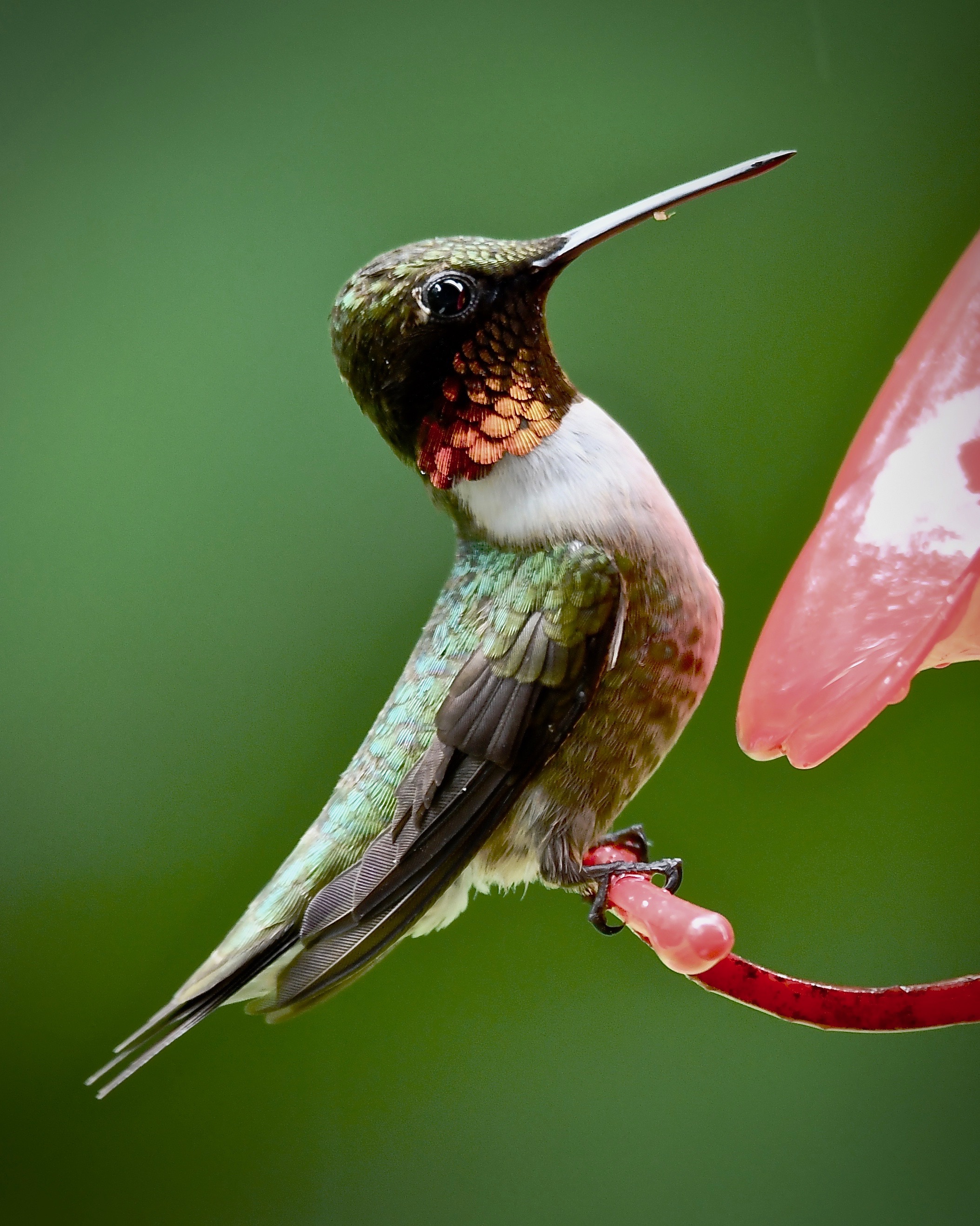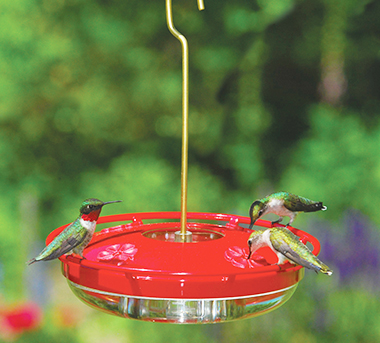Hummingbird Activity to Increase Soon
In the next couple of weeks we should all begin to see more hummingbird activity at our feeders. I’ve seen considerably more just in the past few days. Hummingbird feeders will be significantly more important to our Ruby-throated hummingbirds in the coming weeks and months as they conclude nesting and begin feeding heavily in preparation for fall migration. Most of us do not see a lot of hummingbird activity until mid-July as females are fully involved with nesting responsibilities and the males are guarding their territory and food sources. Hummer feeders are just not that important to them during this time as nectar from flowers and the insects they consume are readily available. People often mistakenly think hummingbirds NEED our feeders. They don’t, but will take advantage of them when the time is right and the feeder and nectar are in good condition. Making sure your feeders are clean and nectar is fresh is always important but especially now when temperatures are high and as birds begin to use them more.
Ruby-throated Hummingbirds (RTH), like many migrant birds, go through hyperphagia prior to migration, meaning they eat almost continuously. They ramp up their consumption of nectar from plants and sugar water from feeders while consuming large quantities of tiny insects that are full of fats and proteins. The sugar is used up almost instantly during daily activities but the protein from insects helps strengthen their flight muscles. All the energy-rich yellow fat accumulates in little storage pockets which are visible when the feathers are gently pushed aside, like when a licensed bander has one in hand.
Male Ruby-throated Hummingbird
Female Ruby-throated Hummingbird
Hummingbird fat pockets
An adult male RTH will weigh approximately 3 grams during summer but put on as much as 2.5 grams of weight by the time it is ready to head south. They will nearly double their weight during hyperphagia.
So, if you haven’t been paying attention to your feeders because of lack of activity make sure your feeders are clean and you have fresh nectar. August and September are THE busiest hummingbird feeding months here in Middle TN so be prepared.
The proper nectar formula is 4 parts water to 1 part sugar. Do not use brown, or raw sugar, and never use honey. Regular white table sugar is best. If you are making a small amount, like a cup, boiling the water is unnecessary. Thoroughly stir the sugar until it is completely dissolved and the water is clear. To make larger quantities it makes sense to heat the water enough to completely dissolve the sugar.





